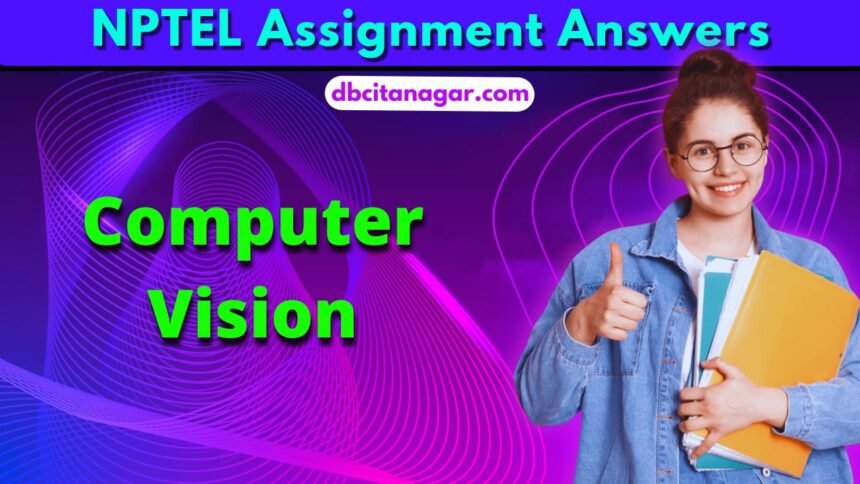NPTEL Deep Learning for Computer Vision week 2 Assignment Answers 2024
1. Which of the following are examples of a high-pass filter? (Select all possible correct options)

Answer :- Click Here
2.

- 1 →iii, 2 →iv, 3 →i, 4 →ii
- 1 →iii, 2 →i, 3 →ii, 4 →v
- 1 →iii, 2 →iv, 3 →v, 4 →ii
- 1 →iv, 2 →iii, 3 →i, 4 →ii
Answer :- Click Here
3. Identify the correct sequence of steps in a Canny edge detection pipeline. Steps are listed below:
1.Compute gradient magnitude and direction 2. Connect individual components 3. Smoothen the image 4. Threshold into strong, weak, or no edge 5. Gaussian Filter and Hysteresis 6. Non-maximum suppression 7. Apply derivative to get edges
- 6 →1 →4 →5 →2
- 3 →1 →6 →4 →2
- 3 →5 →1 →4 →2
- 6 →8 →5 →7 →2
Answer :-
4. In terms of computational efficiency, how does the separability of a 2D convolution kernel affect the filtering process?
- It has no effect on efficiency
- It allows the convolution to be performed as two 1D convolutions, which is faster
- It requires more memory but fewer computations
- None of the above
Answer :-
5. Which of the following operations is an example of linear filtering?
- Thresholding an image
- Histogram equalization
- Morphological dilation
- Applying a Gaussian blur
Answer :- Click Here
6. What is the purpose of creating a scale space in SIFT?
- To remove noise from the image
- To detect features at different scales
- To enhance edge detection
- To compress the image
Answer :-
7. Choose the correct statements from among the following:
- For any low-pass or high-pass filter, the sum of the filter coefficients always adds up to 1.
- Brightness enhancement by image addition is a point operation.
- k(a∗b)=(ka)∗(kb), where a is the image, b is the filter, k is a scalar and ∗ is the convolution operator.
- only 1
- 1 and 2
- only 2
- None of the above
Answer :-
8. Which of the following statements is false?
- Real-world RGB images can be thought of as matrices in continuous space on R3, but the images we store on a computer are discrete.
- We can represent an RGB image as a function of the form. f:R3→R where R3 represents image coordinates (channel, height, width) and R represents intensity.
- The transformation I^(x,y)=I(x,−y) flip the image I upside down.
- Denoising an image through the moving average filter is an example of global operation as opposed to point or local operations.
Answer :-
9. Assertion (A): Gabor filters are particularly effective for texture analysis in image processing.
Reason (R): Gabor filters can be tuned to respond to specific frequencies and orientations in an image.
Choose the correct answer from the options below:
- Both A and R are true, and R is the correct explanation of A.
- Both A and R are true, but R is not the correct explanation of A.
- A is true, but R is false.
- A is false, but R is true
Answer :- Click Here
10. Which property is SIFT designed to be invariant to?
- Only rotation
- Only scale
- Rotation and scale
- Scale, rotation, and illumination changes
Answer :-
11. What is the primary difference between blob detection and corner detection?
- Blob detection finds regions, while corner detection finds points
- Blob detection finds circles, while corner detection finds rectangle
- Corner detection works on color images, while blob detection only works on gray scale
- Blob detection requires machine learning, while corner detection doesn’t
Answer :-
12. Given is a 3 × 3 image,

The central element after applying linear contrast stretching is:
- 54
- 25
- 13
- 18
Answer :- Click Here






